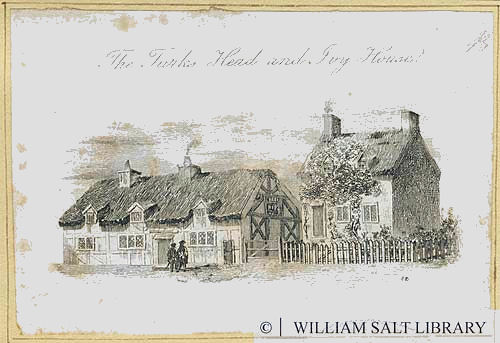|
Brownhill’s High was originally built as a college for girls in 1927
to take 420 students. It was built around a quadrangle in the
architectural style of a public school at a huge cost of £43.000. Head
teacher Andrew Stanier has the programme of the formal opening in 1929
performed by the Duchess of Athol.
“It was
unique in Stoke on Trent for its time,” says Andrew handing me the
school’s first prospectus. “It was then called Tunstall High School for
Girls. Classes were being conducted temporarily in the Victoria Institute
while they were waiting for Brownhills to be built.”
The
document is a wonderful piece of social history. Admissions were by
examination for girls-only from the age of 10. Parents were compelled to
sign an agreement to keep their children at the school for 4 years at a
fee of 3 guineas or 5 guineas for non-ratepayers outside Stoke on Trent.
“As you
can see,” Andrew points out, “It was almost a private school designed for
higher education. Using that now redundant term, it became a girl’s
grammar school.”
Someone
who can just recall Brownhills in those days is current long-serving
teacher, Richard Boulton.
“I
arrived as a twenty-year old arts and design teacher in 1964,” recalls
Richard. “Miss Price was the headmistress and I can tell you it was all
pretty daunting. You have to consider that it was an all-girl’s school.
And because it had an upper and lower sixth-form many of the students
were only a couple of years younger than me.”
Moving on
I wondered what happened to Wood’s mansion.
“I don’t
remember it before it was demolished,” Richard says. “Extended projects
and buildings stands on the site it occupied.”
In fact
Brownhills Hall was demolished in the 1950’s, when it was still an
impressive building but decaying and unusable. The school became a mixed
gender comprehensive in the early 1970’s. And gone forever are the brown
blazers and skirts replaced by the modern jackets and trousers. Deputy
head Sue Wilson recalls a Wood connection back in 1986.
“We
decided to put on a play for our Christmas concert called The Doctor’s
Undoing,” recalls Sue. “The head Tim Legge and I wrote the words with
scenes set in the doctor’s surgery, the hall and gardens and the Turk’s
Head, an ancient Burslem pub where Dr Oliver spent his time getting
drunk.”

'The Turks Head and Ivy House.'
Showing thatched cottages. These buildings stood on Bucknall
Road, Burslem. Artist: 'E.B.'
date: (c) 1800-1899
© William Salt Library
|